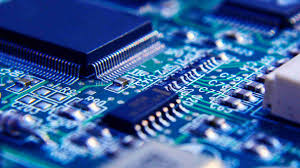To capitalise on the growing semiconductor industry with a vision of Atmanirbhar Bharat, India is taking various steps to become a global leader in the industry. On May 12, Union Minister Rajeev Chandrasekhar launched the 3rd SemiconIndia futureDESIGN Roadshow at IIT Delhi.
The Semicon India Future Design program is the central government’s flagship program to stimulate next-gen semiconductor designers and promote a culture of co-development and joint ownership of IPs with active industry participation. In addition, it also aims to promote the development of indigenous semiconductor chips for automobiles, mobility, communication, and computing.
The first such roadshow was organised at Karnavati University, Gandhinagar, on October 18, while the second roadshow was held at IISc Bangalore on February 24. The roadshows are aimed at encouraging startups, next-generation innovators, and business leaders to invest in semiconductor sector in India.
Semiconductors are at the heart of modern technology
Semiconductors power a wide range of devices, including smartphones, computers, televisions, automotive systems, medical equipment, and more. India’s unwavering support for the industry can lead the country to drive technological advancements and innovation in various sectors, leading to overall societal progress.
Speaking on the occasion, Union Minister Rajeev Chandrasekhar said, “Our target is to create 100 semiconductor design startups.” The government is working to make India a global leader in the industry and has also provided incentives worth Rs. 76,000 crore to the industry.
Strengthening the semiconductor industry
India is growing rapidly in the global electronics value chain. The rapid growth of digitalization is playing a significant role in creating new opportunities in the sector.
Another key advantage for India is its vast market potential. The country has a growing population and a burgeoning middle class, which offer a huge consumer base for semiconductor products, creating a strong demand driver for the industry.
Research and development in semiconductors leads to advancements in materials, manufacturing processes, and design techniques, which can benefit other sectors as well. A strong semiconductor industry also acts as a catalyst for a vibrant innovation ecosystem and creates opportunities for knowledge exchange and technology transfer.
Given the country’s huge startup ecosystem and the fact that around 20% of the world’s semiconductor design engineers are from the country, India can position itself as a significant player in the industry. The recent announcement of the first semiconductor manufacturing unit in Dholera, Gujarat, is also a major development in the sector.
























 WhatsApp us
WhatsApp us